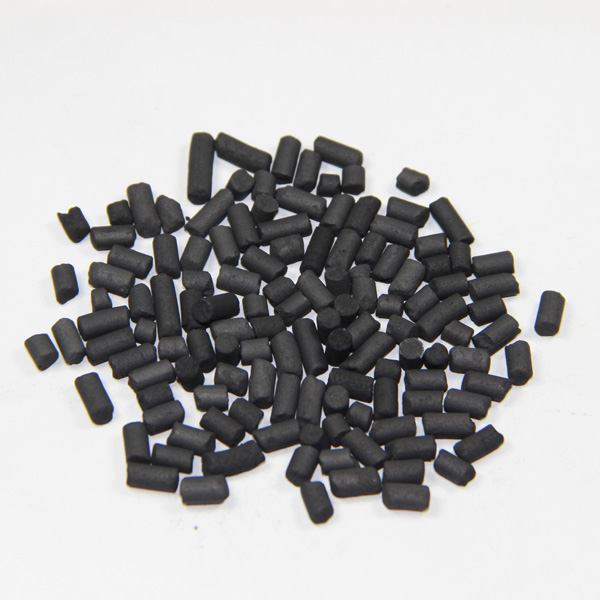+86 17737144966
Have you ever wondered why algae blooms persist or fish health declines despite your diligent pond care? The answer often lies in invisible contaminants that traditional filtration systems miss. Activated carbon for ponds emerges as a scientifically proven solution to this pervasive challenge, offering unmatched adsorption capabilities that transform water quality management.
Activated carbon operates through a process called adsorption, where dissolved pollutants chemically bond to its porous surface. A single gram of high-quality material contains over 5,000 square feet of microscopic pores, enabling it to capture:
This purification process occurs without altering water pH or removing essential minerals, making it safe for aquatic life. Laboratory tests show premium-grade activated carbon removes 92-97% of contaminants within 24 hours of application.
Not all activated carbon products deliver equal results in water features. Three key specifications determine effectiveness:
| Parameter | Ideal Range | Impact on Performance |
|---|---|---|
| Iodine Number | 1000-1100 mg/g | Indicates micropore density for chemical adsorption |
| Particle Size | 2-4 mm granules | Balances flow rate with contact time |
| Ash Content | <3% | Minimizes inorganic impurities |
Marine-grade carbons processed through steam activation demonstrate superior performance compared to chemically-treated alternatives. Their honeycomb-like structure provides 40% greater surface area for contaminant removal.
Proper implementation ensures optimal resource utilization. Professionals recommend these deployment strategies:
1. Flow-Through Reactors: Force water through contained carbon beds using pond pumps, achieving complete water turnover every 2-4 hours.
2. Passive Mesh Bags: Suspend 25-50 lbs of carbon per 1,000 gallons in high-circulation zones, replacing every 30-45 days.
3. Seasonal Treatments: Intensify usage during summer months when biological activity peaks, reducing quantities by 60% in winter.
Combining these methods with routine water testing (weekly pH and TDS measurements) maintains contaminant levels below 5 ppm – the threshold for optimal aquatic health.
Does activated carbon remove beneficial bacteria? Unlike UV sterilizers, carbon filtration preserves nitrifying bacteria colonies while eliminating harmful substances. Studies confirm <90% bacterial retention in properly maintained systems.
Can overdose occur? While non-toxic, excessive carbon may temporarily reduce water nutrient levels. Professional-grade calculators recommend 1.5 lbs per 100 gallons as the safe upper limit.
How to dispose responsibly? Spent carbon serves as effective compost material when mixed with organic waste, completing the ecological cycle without landfill contribution.
Regular users report measurable improvements extending beyond water clarity:

These operational advantages position activated carbon as a cost-effective, long-term solution rather than temporary fix. When paired with mechanical filtration and aeration systems, it creates a comprehensive water management ecosystem.
Essential verification criteria ensure material suitability:
Reputable suppliers provide third-party contaminant removal reports and batch-specific quality certificates. Avoid products listing unspecified "additives" or lacking pore structure documentation.
Emerging technologies enhance traditional carbon applications:
Catalytic Carbon: Iron-impregnated formulations destroy chloramines 3x faster than standard grades through chemical reduction.
Rechargeable Cartridges: Solar-reactivated units extend service life to 18-24 months through thermal desorption cycles.
Bioenhanced Media: Carbon substrates pre-colonized with nitrifying bacteria accelerate biological filtration establishment by 14 days.
These advancements promise to reduce annual maintenance costs by 40-60% while improving contaminant removal efficiency above 99% for priority pollutants.
Develop a phased approach for continuous water quality improvement:
This methodology prevents system overload while maintaining contaminant concentrations below 2 ppm – the industry standard for premium-grade water features.
While activated carbon addresses numerous water quality issues, it functions optimally as part of an integrated system. Ensure proper oxygenation (6-8 mg/L dissolved oxygen) and mechanical filtration precede carbon treatment stages. For ponds exceeding 10,000 gallons, consult hydraulic engineers to design scaled solutions preventing flow bypass.
By adopting these evidence-based practices, water feature managers achieve unprecedented control over aquatic environments. The result? Crystal-clear water that enhances ecosystem vitality while reducing long-term operational burdens.